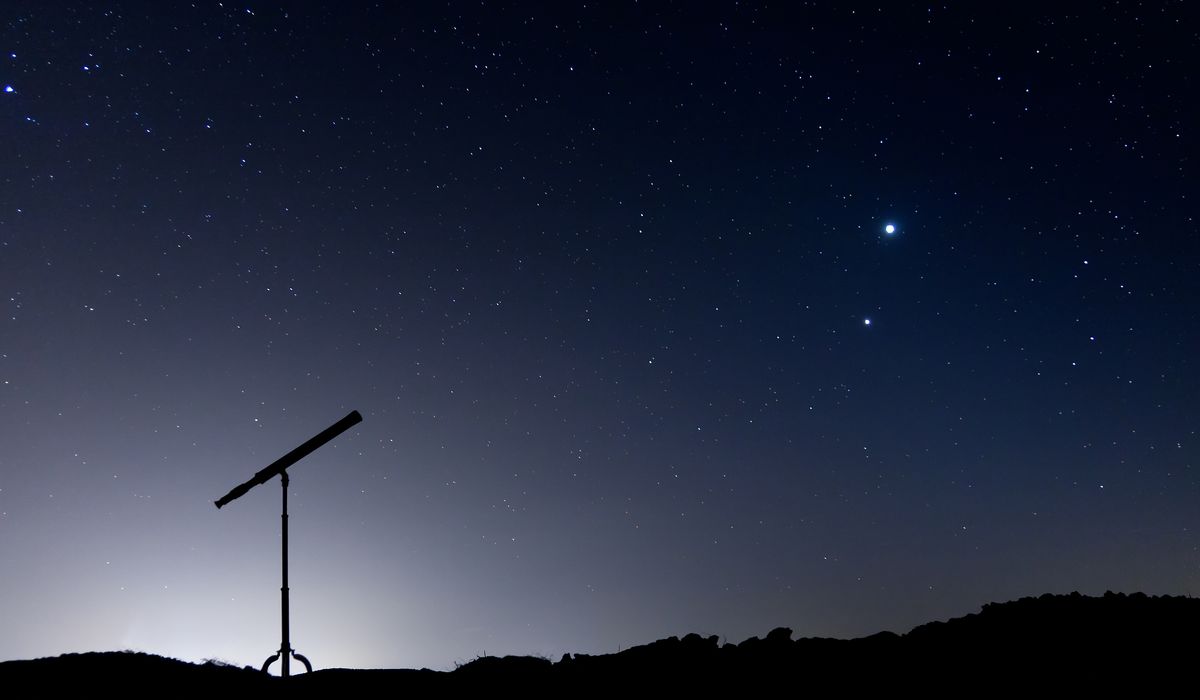


Despite their vast physical distance, the planets Jupiter and Venus appeared to kiss in the sky at 6:58 p.m. EST Wednesday.
The two planets, the solar system’s brightest, according to NASA, were visible in the night sky near each other until 8:31 p.m. While they appeared to be only half a degree apart, visually the width of a full moon, the duo are separated in space by 400 million miles.
Wednesday’s event, known as a conjunction, will be the closest Jupiter and Venus come to each other until Feb. 7, 2032, when the two are projected to appear just 0.35 degrees away from each other in the morning sky, according to Space.com.
Both planets appeared at their smallest, with Venus looking like a blob-shaped akin to a gibbous moon. Jupiter, the solar system’s largest planet, appeared with its moons Io, Ganymede and Callisto in a nearly straight line.
Viewers in the western U.S. and Canada also saw Europa, another Jovian moon, at the end of the line emanating from Jupiter at 6 p.m. PST, Space.com said.
Conjunctions occur when one planet passes another as both orbits the Sun. The closer a planet is to the Sun, the faster its orbit, so Wednesday’s conjunction saw Venus overtake Jupiter. Venus’ orbit is 225 Earth days, while Jupiter’s is slightly less than 12 Earth years. A visible conjunction between the planets occurs roughly once every 13 months.
• Brad Matthews can be reached at bmatthews@washingtontimes.com.
